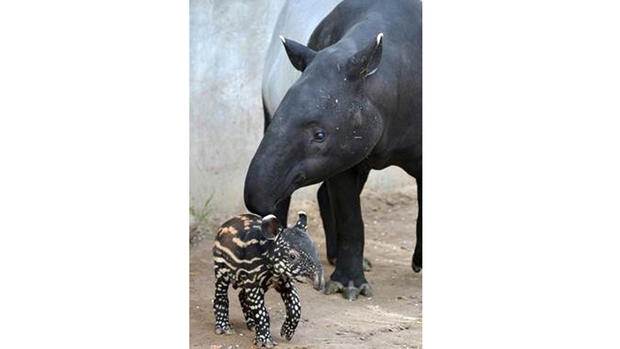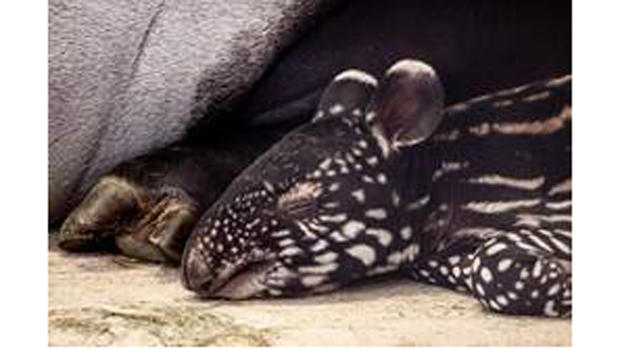Denver Zoo Welcomes Newborn Tapir
DENVER (CBS4)- A newborn tapir is making his home at the Toyota Elephant Passage at the Denver Zoo.
The male calf named Baku was born to mother Rinny and father Benny on April 29. He's only the second birth of his species at the zoo.
Baku will remain behind the scenes with his mother until they are comfortable enough to venture outdoors. Until then visitors can see live, closed-circuit video of Baku on monitors inside Toyota Elephant Passage.
"Baku" is the Japanese word for tapir. Baku are also supernatural spirits in Chinese and Japanese folklore that take children's nightmares away and protect against evil. They are often depicted as having some tapir-like physical characteristics.
Rinny was born at Seattle's Woodland Park Zoo in 2007 and came to Denver Zoo from there in 2010. Benny was born at the City of Belfast Zoo in Ireland in 2006 and arrived at Denver Zoo from there in 2007. The two were paired under recommendation of the Association of Zoos and Aquariums (AZA) Species Survival Plan (SSP) which ensures healthy populations and genetic diversity among zoo animals. Fortunately, the couple has proved to be an excellent match. This is also Rinny and Benny's second calf. Fortunately, this delivery was much more seamless than the first. Their first calf, Dumadi, was born in September 2012. While his birth was normal, the events immediately following were difficult. After Rinny unsuccessfully attempted to free Dumadi from his amniotic sac, two staff members raced in to free the newborn from the sac, providing mouth-to-snout rescue breaths and manually stimulating the newborn for regular breathing in order to expel liquid from his lungs. After a few minutes of rescue efforts, Dumadi successfully began to breathe on his own.
Though they are most closely related to horses and rhinos, tapirs are similar in build to pigs, but significantly larger. Malayan tapirs have a large, barrel shaped body ideal for crashing through dense forest vegetation. Their noses and upper lips are extended to form a long prehensile snout similar to a stubby version of an elephant's trunk. Malayan tapirs are the largest of the four tapir species. They stand more than 3-feet-tall and can stretch from between 6 to 8-feet-long. On average they weigh between 700 and 900 pounds. They are also excellent swimmers and spend much of their time in water. They can even use their flexible noses as snorkels!
As adults, Malayan tapirs have a distinctive color pattern that some people say resembles an Oreo cookie, with black front and back parts separated by a white or gray midsection. This provides excellent camouflage that breaks up the tapir's outline in the shadows of the forest. By contrast, young tapirs have color patterns that more resemble brown watermelons with spots and stripes which help them blend into the dappled sunlight and leaf shadows of the forest and protect them from predators.
Malayan tapirs are the only tapir native to Asia. Once found throughout Southeast Asia, they now inhabit only the rainforests of the Indochinese peninsula and Sumatra. With a wild population of less than 2,000 individuals they are classified as endangered by the International Union for Conservation of Nature (IUCN) due to habitat loss and hunting.
LINK: denverzoo.org








